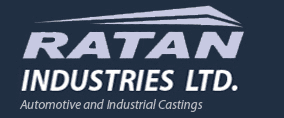A Zero liquid discharge water treatment plant treats wastewater by recovering valuable resources. The solids produced by the plants can be sold or reused for other purposes. The United States has discovered that lithium can be recovered from oil field brines and South American salars. The gypsum recovered from flue gas desalination wastewater can be used for drywall manufacturing. In addition to using natural resources, Zero liquid discharge systems also reduce water usage.
The technologies used in Zero liquid discharge water treatment plants include reverse osmosis, electrodialysis, and brine concentrators. The reverse osmosis technology removes the majority of dissolved solids. However, brine concentrators have a higher salt content and are more efficient for reduced volume waste. Whether or not ZLD is right for your facility, the following steps are necessary to achieve the desired results.
Zero liquid discharge, or ZLD, is a common approach to water treatment and waste disposal that is gaining ground as a green alternative. It can benefit your bottom line, but it can also boost your brand image and strengthen local relationships. Many types of technologies are available to meet zero liquid discharge requirements, including dissolved air flotation, media filtration, and activated carbon filtration.
The three main components of a ZLD water treatment plant are electrodialysis, a brine concentrator, and a membrane. The reverse osmosis train captures a majority of the dissolved solids. While brine concentrators have a lower salt content than RO, they are highly effective for reducing volume waste and higher water quality. They are also less expensive than a traditional RO system.

Zero liquid discharge, or ZLD, is a common approach to water treatment and waste disposal that is gaining ground as a green alternative. It can benefit your bottom line, but it can also boost your brand image and strengthen local relationships. Many types of technologies are available to meet zero liquid discharge requirements, including dissolved air flotation, media filtration, and activated carbon filtration. Read on to learn about using these technologies in your business.

The zero liquid discharge system is a highly efficient wastewater treatment system, and it can recover most of the dissolved solids in wastewater and is cost-effective. Most zero liquid discharge (ZLD) water systems require a low-salt content and reduce costs. For this reason, a ZLD water treatment system is typically more expensive than a traditional one. The two most common approaches are reverse osmosis and electrodialysis.
The Zero liquid discharge system involves two basic steps: pre-concentration and distillation. For example, a ZLD water treatment plant will recover more than half of the water it treats. The remainder of the water will be recycled, and there will be no residual water. A fully functional zero liquid discharge ZLD system can even reduce a business's total cost of production. These two factors are why so many organizations have zero liquid discharge policies.
A ZLD water treatment plant consists of two main steps. The first step is pre-concentration, achieved through DAF or membrane brine concentrators. A ZLD system can recover 60-80% of the water filtered through the system. The second step is distillation. The distillation stage uses a chemical feed/storage facility, and a zero liquid discharge plant eliminates the need for further treatment.
A Zero liquid discharge water treatment plant uses membranes to clean wastewater. The most common one is reverse osmosis. The reverse osmosis train captures the majority of dissolved solids in water. A brine concentrator is a hybrid between RO and electrodialysis, and it can handle high salt content but cannot handle as much. This type of treatment plant is the ideal solution for various industrial applications.
A ZLD water treatment plant must consider the location and type of wastewater that it is treating. Most zero liquid discharge systems do not recover all of the wastewater. A near-ZLD system can still meet the regulatory requirements, but it can only recover a portion of the wastewater. If you do not need 100% recovery, you should consider the next level up, a near-ZLD program.
A ZLD water treatment plant must first be customized to your particular needs to achieve zero liquid discharge. A ZLD water treatment plant will require pretreatment to remove simple things in the wastewater stream. In some cases, the process will also require ultrafiltration after the gravity sand filter. A ZLD water treatment plant must have clear, non-hazardous waste.







































Share Post